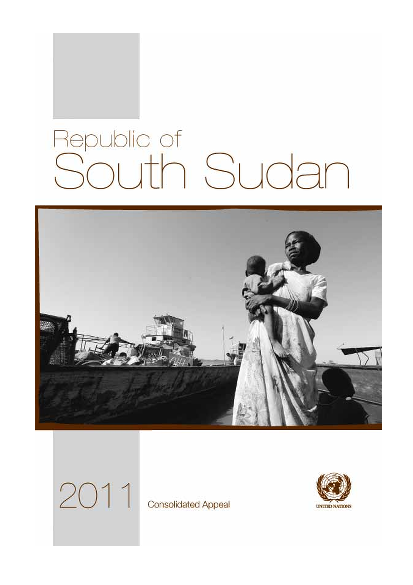
The first six months of 2011 brought historic changes to the territory that becomes the world’s newest nation, the Republic of South Sudan, in July 2011. Some of these changes were foreseen and captured in the most likely planning scenario developed by humanitarian actors for 2011. Others have exceeded expectations, resulting in a deterioration of the situation more closely in line with aspects of the worst-case scenario. The referendum balloting on southern independence began on 9 January 2011 as scheduled and passed peacefully. The plebiscite drew a 99% vote for independence, paving the way for the establishment of an independent nation at the end of the Comprehensive Peace Agreement (CPA) on 9 July 2011. Other CPA benchmarks, including border demarcation and the status of Abyei, remained unresolved, impairing relations between northern and southern Sudan. The military takeover of Abyei and the area north of the Bahr el Arab/Kiir River by the Sudanese Armed Forces in May and June and the displacement of over 110,000 people southwards constituted a major violation of the CPA. Internal political tensions and armed opposition also spread during the period, with at least seven rebel militia groups beginning or scaling up attacks against the Sudan People’s Liberation Army (SPLA) in areas of strategic importance in South Sudan. The insurgency has put civilians at grave risk. Extensive re-mining has been reported, security forces have arbitrarily detained people and destroyed property, gender-based violence has increased, and there have been numerous instances of forced recruitment. Inter-communal violence, including large-scale reprisal attacks, has affected various parts of the south by mid-June, authorities were reporting that more than 1,800 people had been killed in inter-communal and militia-related violence and more than 154,000 had been displaced. More than 20 separate attacks by the Lord’s Resistance Army (LRA) in Western Equatoria killed 17 people and displaced over 7,000.
By mid-June 2011, more than 306,000 southerners had returned from the north since October 2010, including 128,000 since the January referendum. Although food security has improved in 2011 compared to 2010, 1.4 million people still require food assistance at some point during the March to August lean season. Increased displacement, additional returns from the north, a sharp reduction in the availability of foodstuffs and basic commodities and a sharp rise in prices have the potential to reverse gains in food security. Humanitarian access and space contracted sharply in parts of South Sudan in early 2011. Humanitarian partners recorded 57 incidents in which state actors interfered with relief operations or restricted the movement of humanitarian personnel, assets or supplies during the first part of the year. Interference with humanitarian operations imposed serious costs on the relief effort in terms of delays, lost funds, lost supplies and by affecting the safety and security of humanitarian personnel. In response to the precarious humanitarian situation in South Sudan, a consolidated appeal for the new republic has been prepared in full consultation with partners. During the interim period, humanitarian activities for the south were included in the Sudan UN and Partners Work Plan for 2011. This appeal includes revisions to the original 2011 projects as well as new projects which are introduced in order to address the deteriorating situation. The Consolidated Appeal (CAP) comprises 256 projects totalling $1 621 million. This is an increase of 24 projects and $47 million over what was included for the southern elements of the 2011 Sudan Work Plan, for which $211 million (34%) has been received so far this year2 . Several clusters, including Protection, Health, Water, Sanitation and Hygiene, Mine Action, Logistics, Non-Food Items and Emergency Shelter, remain seriously underfunded, having received between 2% and 29% of their requirements.